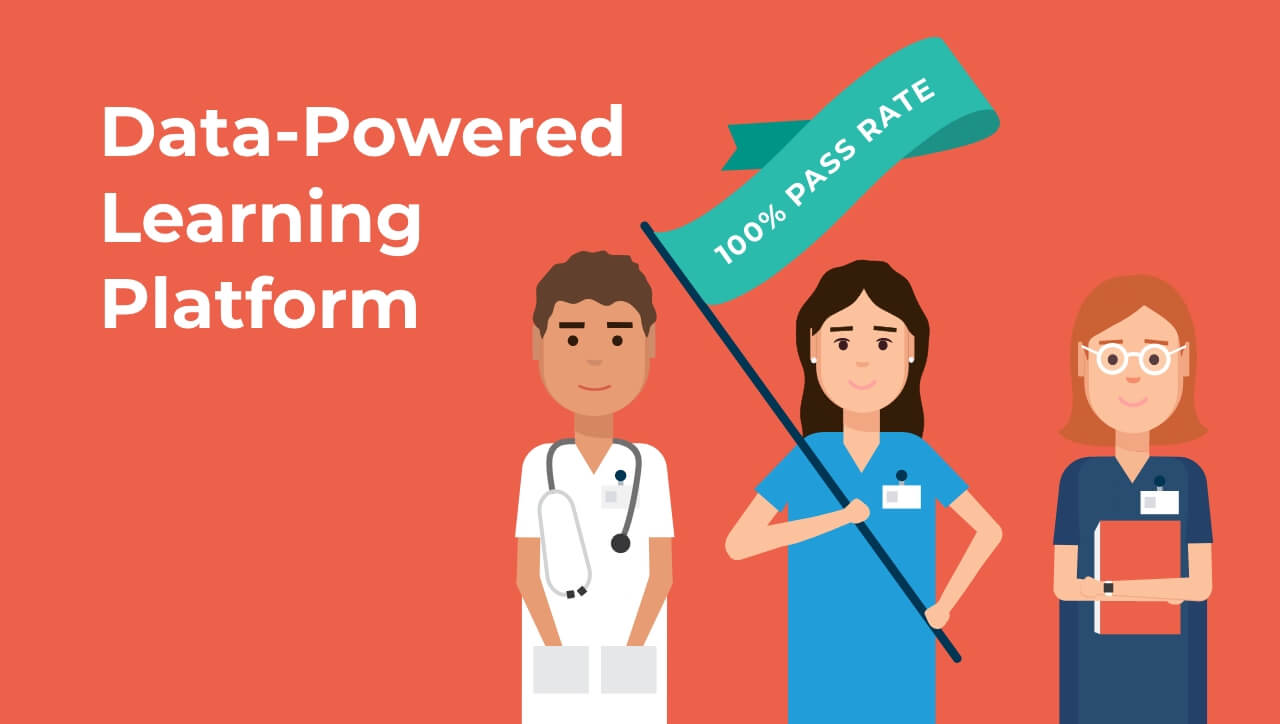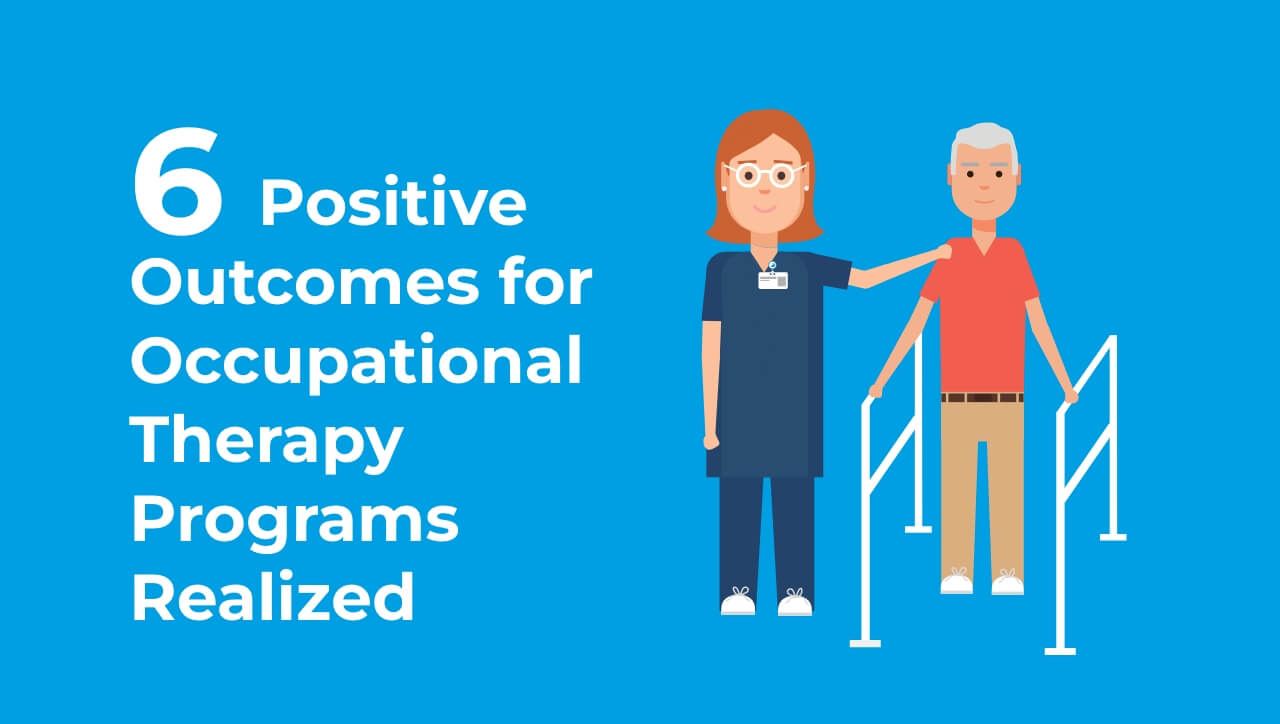Building an Evidence-Based Learning Environment in OT Education
For educators, the challenge lies in helping students move beyond surface-level understanding. It’s not just about whether students can recall information for a test. It’s about whether they can apply what they’ve learned in a clinical setting, think critically through patient cases, and continue developing those skills after graduation.
Occupational therapy (OT) students are tasked with learning a significant amount of complex material in a relatively short period of time. From foundational sciences to clinical reasoning and intervention planning, they’re expected to retain and apply a wide range of information—often while juggling fieldwork, exams, and personal responsibilities.
That’s where integrating evidence-based practice into the OT curriculum becomes especially valuable. It supports students in building stronger clinical reasoning skills, encourages lifelong learning, and helps align academic preparation with what they’ll face in practice.
In this blog, we’ll explore:
Building students’ clinical knowledge is essential—but just as important is how they learn to use that knowledge in context. As OT grows more complex and research-driven, academic programs play a key role in preparing students to make sound clinical decisions, grounded in both evidence and experience. That preparation starts with how evidence-based practice is introduced and reinforced throughout the curriculum.
The Importance of Evidence-Based Practice in the OT Curriculum
Evidence-based practice (EBP) supports how OT students develop clinical reasoning and decision-making skills. When it’s introduced early—beyond being a reference or reading assignment—students begin to engage more actively with course content and apply what they’re learning in a clinical context.
Embedding EBP into the curriculum helps move learning beyond memorization. It encourages students to think more critically, ask informed questions, and connect clinical choices to supporting evidence. It also helps prepare them to approach new information in practice with a more structured and analytical mindset.
For educators, integrating EBP can also support program goals around knowledge retention, clinical readiness, and board exam performance. A curriculum that incorporates research consistently—through assignments, discussions, and applied casework—reinforces the habits students will need as they transition into the clinical environment.1
That said, making evidence-based practice part of everyday learning takes planning. It’s not just about assigning journal articles or teaching appraisal skills in isolation. Students benefit most when evidence is woven throughout the educational experience and consistently tied back to clinical relevance.2
Examples of Evidence-Based Practice in Action
Educators can use a variety of strategies to help students move from reading about evidence to applying it in meaningful ways. While approaches may vary from program to program, a few common methods have been shown to help reinforce evidence-based thinking in OT education.
Integrating research participation into coursework
Some programs involve students in small inquiry-based projects or faculty-led research activities. These experiences give students a better understanding of how evidence is developed and create opportunities for more analytical thinking around treatment approaches.
Linking EBP to case studies and clinical assignments
Assignments that ask students to justify a treatment plan using current literature or evaluate an outcome based on research can help bridge the gap between academic learning and clinical reasoning. These exercises reinforce content while encouraging students to approach decisions with an evidence-informed mindset.
Using reflective journaling to support metacognition
Journaling offers students a structured way to reflect on how they interpret and apply evidence. Whether analyzing a study or working through a clinical scenario, this practice helps surface reasoning patterns and strengthens learning over time.
Facilitating article-based discussions and journal clubs
Article reviews or journal clubs create space for collaborative learning and deeper engagement with the literature. These discussions are especially effective when tied to lab work, fieldwork experiences, or clinical themes being covered in class.
Offering dedicated instruction on EBP skills
Some programs include structured instruction on how to find, evaluate, and apply research. Teaching the fundamentals of evidence-based practice directly gives students the tools to work with research more confidently, both academically and in future clinical roles.
Assessing Knowledge Application with Board-Style Questions
Utilizing practice questions that present students with a clinical presentation or scenario to assess their ability to think critically and apply knowledge can help make the connection between academic theory and clinical practice. These could be reviewed and discussed as a group or assigned to students to take independently.
Regardless of the method, these strategies all share a common goal: to give students consistent, practical opportunities to engage with evidence in ways that support clinical reasoning and long-term professional growth.
Challenges Educators Face
Even with a clear understanding of its value, bringing evidence-based practice into the OT curriculum isn’t always straightforward. Many educators recognize the importance of EBP but face practical barriers to integrating it consistently across courses and learning experiences.
Limited time within an already full curriculum
OT programs are dense, with a wide range of competencies to cover. Finding space to go beyond introducing research—to teaching students how to evaluate and apply it—can be difficult.
Inconsistent emphasis during fieldwork
Even when EBP is part of classroom instruction, it’s not always reinforced in clinical placements. This disconnect can make it harder for students to carry evidence-based thinking into real-world settings.
Gaps in educator training and confidence
Some faculty members may not have received formal training in EBP or may feel unsure about the best ways to teach it. Without support or shared models, integration efforts can feel piecemeal or inconsistent.
Gaps in educator training and confidence
Educators often need resources that make it easier to incorporate EBP into existing courses—whether that’s access to case-based questions, research examples, or time-saving instructional tools that help students engage more actively with evidence.
These challenges don’t reflect a lack of interest or commitment—but rather the practical realities of academic programs balancing many priorities. Supporting EBP integration means giving educators tools that align with how they already teach and how students learn best.
TrueLearn’s OT SmartBank: Bridging Theory to Practice
Assignments that ask students to justify a treatment plan using current literature or evaluate an outcome based on research can help bridge the gap between academic learning and clinical reasoning. These exercises reinforce content while encouraging students to approach decisions with an evidence-informed mindset.
Let’s take this research as an example:
Extensor tendon injuries are a common occurrence and, if mishandled, can lead to long-term impairment for patients. Post-surgery, patients may have to deal with extensor tendon shortening, loss of flexion and extension resulting from adhesions, or weakened grip. The article provides an overview of the management of such injuries and discusses the following:
- A systematic examination method for assessing such injuries
- Presentation and management of all types of extensor tendon injuries
- Rehabilitation methods for eight extensor zones, and also for thumb injuries
- Guidance on mobilization, pre- and post-surgery
The recommended treatment approach for the different extensor zones is as follows:
| Zone I | Zone II and III | Zone IV – Zone VIII |
|---|---|---|
| Immediate repair | Can often be managed conservatively | Surgical repair |
Let’s say that you’ve discussed this article with students. How can you take it a step further? How can you turn evidence-based practice into a more intentional teaching and learning tool—one that strengthens students’ reasoning skills and supports their clinical development?
Leverage TrueLearn’s OT SmartBank, comprised of 1,800+ practice questions, including scenario-based sets introduced to the NBCOT OTR®* Exam in 2024, covering topics mapped to the NBCOT® Exam Content Outline, written by certified occupational therapists. Each question aligns to the NBCOT® format and includes a key learning point and detailed explanations, helpful for learning, for each answer choice.
Choose questions from the OT SmartBank that are relevant to the topic of discussion and distribute the questions as student assignments or integrate them into lectures. This approach bridges theory to practice, allowing students to reinforce their mastery of key concepts (via studying the review) and assess their knowledge application (through answering TrueLearn’s OT SmartBank practice questions). Additionally, students gain valuable exposure to board-style questions, similar to what they will face on exam day, which boosts their readiness for a first-time pass.
TrueLearn is also integrated with Picmonic, offering audio-visual mnemonic lessons on foundational concepts within answer explanations. This added layer helps reinforce concepts through storytelling and imagery, supporting a wider range of learning preferences.
By combining active learning, learning science, and actionable data, TrueLearn’s OT SmartBank helps bridge the gap between theory and clinical decision-making—while supporting your program’s goals around retention, readiness, and real-world competency.
Want to see a TrueLearn OT SmartBank question? Download one here.
TrueLearn
4,422+
OT Learners
3,600,000+
Questions Taken
↑21.08%
Exam Performance
Picmonic
↑331%
Long-Term Retention
1,000,000+
Users
↑55%
Exam Scores
Find out how other OT programs are leveraging TrueLearn and Picmonic to empower faculty and students toward enhanced learning and OTR® performance.
*OTR® is a trademark of the National Board for Certification in Occupational Therapy (NBCOT®). This content is not endorsed or approved by NBCOT®.
1 Brown T. The need for occupational therapy evidence-based education. Occup Ther Health Care. 2025;39(2):314-330. doi:10.1080/07380577.2023.2288676
2 Helgøy KV, Bonsaksen T, Røykenes K. Research-based education in undergraduate occupational therapy and physiotherapy education programmes: a scoping review. BMC Med Educ. 2022;22(1):358. doi:10.1186/s12909-022-03354-2


